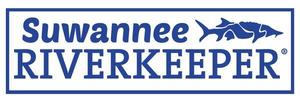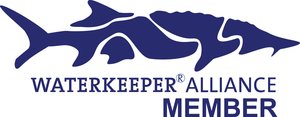WWALS Watershed Coalition, Inc. (WWALS) is an IRS 501(c)(3) nonprofit educational charity, founded in June 2012.
WWALS Vision: A healthy watershed with clean, swimmable, fishable, drinkable water.
WWALS Mission:
WWALS advocates
for
conservation and stewardship
of the surface waters and groundwater of the Suwannee River Basin and Estuary, in south Georgia and north Florida, among them the Withlacoochee, Willacoochee, Alapaha, Little, Santa Fe, and Suwannee River watersheds, through
education,
awareness,
environmental monitoring,
and citizen
activities.
Explanation
WWALS
On 20 December 2016, the WATERKEEPER® ALLIANCE (WKA) board approved WWALS becoming a WKA Member as Suwannee RIVERKEEPER®.
Also in December 2016, the WWALS board appointed John S. Quarterman to the full-time staff position of Suwannee RIVERKEEPER®.
Purposes
Embedded in the WWALS Mission are three main purposes that lead to its goals.
Advocacy
Many other organizations already promote paddling, swimming, fishing, birding, and other water-related activities hereabouts, as does WWALS for fun and education. WWALS exists to assist positive changes and to resist invasive problems, using strategies such as environmental monitoring and tactics such as outings and events in that advocacy.
Conservation
WWALS is fortunate in not having big single-point pollution problems such as plague watershed organizations on single large rivers. Thus we do not have to spend most of our time on preservation and protection, and we can spend more on conservation: connecting our rich local history with new paddlers on the rivers and lakes and streams watching what’s going on, fishing, swimming, boating, and enjoying our marvelous blackwater rivers and exotic vegetation and wildlife.
The purpose of WWALS is not to preserve everything exactly as it always was, for example back at the time of the Alapaha River Trail from the 1970s. Many things have already changed, and conservation may involve adding new things, such as the new, extended, Alapaha River Water Trail, and similarly for the Withlacoochee and Little River Water Trail.
Our problems are more widespread. having more to do with invasive species (some still being sold in local nurseries), waterway neglect (dams of fallen trees due to erosion ending up causing flooding), agricultural runoff (erosion dirt and pesticides), forestry runoff (due to clearcutting and pesticiding of undergrowth), wetlands destruction (cypress swamp clearing for wood use, agriculture, or subdivisions), and sprawling development (excessive impermeable surface causing runoff along with land clearing removing runoff barriers), leading to such problems as Valdosta wastewater overflows. Such problems won’t get solved by suing some big plant, and many of them aren’t pollution at all in the traditional sense.
Stewardship
Conservation doesn’t happen by itself, and WWALS is people taking on stewardship to deal with the pervasive environmental changes people have caused. Our waters support our recreation, agriculture, economy, and our very lives, so we must be stewards of our waters.
Stewardship includes resisting invaders such as the new pipelines, and increasing agricultural land purchases by corporations far away, as well as older invasions such as mercury in our rivers from coal plants.
WWALS practices stewardship beyond protection into conservation: proactive participation in creation or restoration of new ways such as promoting solar power to remove any excuse for such obsolete pipelines or coal plants.
Watershed
The name of the organization is WWALS Watershed Coalition, or WWALS for short. WWALS composed its name as an acronym of some of its better-known rivers, but it is not limited to those rivers nor to their river banks.
WWALS territory as Suwannee Riverkeeper encompasses the entire watersheds of the Withlacoochee, Alapaha, Santa Fe, and Suwannee Rivers and all their tributaries, as well as the Lower Suwannee River to the Gulf of Mexico, plus the Suwannee River Estuary, as well as those parts of the Floridan Aquifer in our watersheds. We also have many members well beyond our formal territory.
![[Basin Map]](jpg/2022-02-17--basin-map.jpg)
Landings and Boat Ramps in the Suwannee River Basin and Estuary
See also WWALS Counties and Cities.
- On 6 June 2012, the original WWALS territory was the watersheds of the Alapaha and Withlacoochee Rivers and all their tributaries, at the incorporation of WWALS Watershed Coalition, Inc.
- On 15 July 2015 WWALS added the Upper Suwannee River HUC to its territory, thus connecting its Alapaha and Withlacoochee territory.
- On 20 December 2016 the WATERKEEPER® Alliance board added the Lower Suwannee River HUC as WWALS territory, as WWALS requested in the WWALS member application. That was the same WKA Board action that made WWALS a WKA Member as Suwannee Riverkeeper.
- On 27 September 2019, the WKA Executive Committee added the Santa Fe River Basin to the Territory of Suwannee Riverkeeper.
WWALS territory now includes all of the Suwannee River from the Okefenokee Swamp in Georgia through Florida to the Gulf of Mexico, and all the Suwannee’s tributaries.
Thus issues such as wastewater overflows, pipelines, water extraction, or fracking anywhere in WWALS’ watersheds are of concern, whether or not they ever reach any of our rivers.
Strategies
Embedded in the WWALS Mission are strategies that are Specific, Measurable, Attainable, Realistic, and Timed (SMART).
Education
Youth, students, and adults, too.
Awareness
This strategy includes many goals and tactics such as mapping encroachment, water quality, invasive species, pesticide run off, etc., and sharing information, as well as outreach to schools to teach students about watershed health and science.
Environmental Monitoring
Monitor for invasive species and water quality.
Activities
WWALS organizes frequent paddle and hiking outings, cleanups, seminars, water quality testing certification, and other events for citizen participation to support our objectives and strategies to advocate conservation and stewardship of our watersheds.
In addition to ongoing social media, brochures, and traditional public relations, WWALS sometimes writes briefs such as to assist a landowner defending against a pipeline or co-signs comments to assist neighboring watersheds evaluating a road project.
Goals
The WWALS board spent much of the late summer and early fall 2016 reviewing and revising the organizational goals. These sessions helped to clarify how projects are evaluated, selected and accomplished.
The WWALS Goals adopted 2 October 2016 are overarching items which help us achieve our vision and mission. They are in a separate web page.
Objectives
To accomplish its purposes, strategies, and goals, WWALS pursues some more near-term objectives, such as the establishment of an Alapaha River Water Trail and a Withlacoochee and Little River Water Trail. For example, the websites, maps, databases, and brochures of the water trails serve as repositories for the mapping strategy and records of environmental measurements.
Issues
In pursuit of all this, WWALS addresses a wide range of issues.

![[Basins Labeled]](jpg/basins-labeled.jpg)

